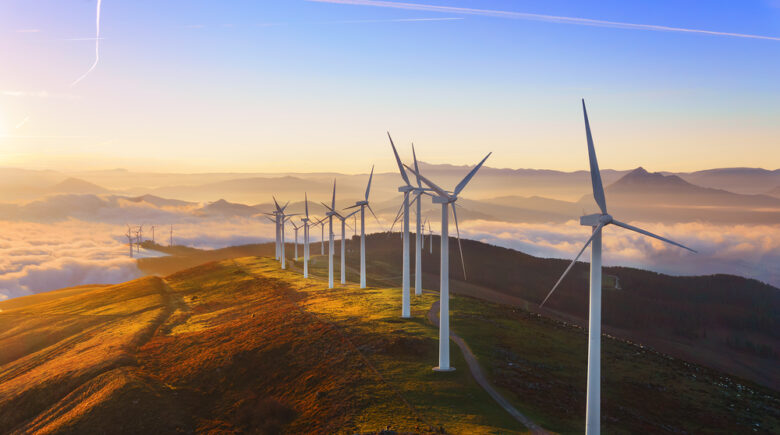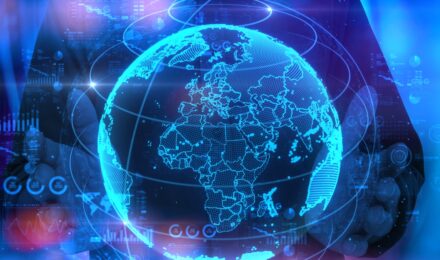Wind energy is a natural form of energy created by the wind. The kinetic energy in the wind is used to turn turbines and generate electricity. Wind power provides about 17% of the United States’ total electricity generation, making it the third most important renewable energy source. Here is everything you need to know about wind energy.
How is wing energy generated?
The wind spins the blades found on wind turbines, and this causes them to turn a shaft. The movement of these shafts causes magnets inside generators to react, causing electricity to be generated. The wind is an intermittent energy source, as it only provides power when it is blowing. Some technologies allow you to capture the energy in the wind when it is not blowing, but they are still being developed and have yet to be licensed for commercial use. Wind turbines are typically found offshore, but there have been more than 300 built along shorelines in about 30 states across the United States. The energy generated by these turbines is transferred to land through an undersea cable buried in the ocean floor, then converted into electricity.
Is wing energy safe for the environment?
Wind power is generally considered to be very clean and efficient. They don’t require a large amount of land, and they are not known to emit any harmful gases or other pollutants into the atmosphere. That being said, wind turbines do need to be maintained because they can break down. The United States Federal Aviation Authority has guidelines in place for how tall, and close wind turbines can be built to airports. They don’t want the moving parts on the turbines to pose a hazard to planes.
What are the benefits of wind energy?
i) Renewable energy: Wind power is one of the more popular forms of renewable energy. Renewable energy is any energy that can be obtained over and over again because it is replenished. Hydroelectric power and solar power are also examples of this.
ii) Fewer Emissions: Wind power doesn’t emit harmful gases into the atmosphere, meaning you will be able to breathe easier if it is being used.
iii) It creates jobs: Since wind turbines need to be maintained, there are jobs available for those who are able to do this work. And since wind power can be environmentally friendly, those who work on wind farms will feel good about their jobs.
iv) It is environmentally friendly: The United States has about 61,000 buildings that require electricity. According to the American Wind Energy Association (AWEA), a wind farm could produce enough electricity for 18.6% of those buildings in America each year. This means that all of the buildings in America could get their electricity from wind farms without having to build any new ones.
v) It improves air quality: According to the AWEA, more than 16 million Americans were exposed to unhealthy levels of air pollution in 2008 as a result of burning fossil fuels such as coal and oil. By 2020, carbon emissions will be reduced by 25% as a result of wind power. This means that you will have cleaner air to breathe.
vi) It reduces CO2 emissions: The AWEA estimates that wind energy could displace coal and oil as the country’s largest source of electricity generation by 2020. This means that there will be fewer CO2 emissions in America because of the clean source of energy that wind provides.
What are the disadvantages?
i) It is not reliable: Wind power is only sometimes going to be able to provide enough power for those who need it most.
ii) It is still new: While wind power has become one of the more popular forms of renewable energy, it has only been around for a short period of time.
iii) It is expensive: Wind power can be expensive because the turbines need to be constructed and maintained. This means that businesses may not want to invest in it because they don’t want to lose money.
iv) It is loud: Some people say they hate hearing the noise from wind turbines because they sound like planes flying overhead.
v) AWEA estimates that wind power would only provide 18% of America’s total electricity generation, and this means that most businesses would still use coal, oil, and gas across America.
vi) There are not enough regulations: Wind turbines can be very harmful to birds, and the only way to prevent this is by creating more regulations that birds adhere to.
How do you store the energy generated?
There are a couple of different ways that this energy is stored. Onshore turbines can be connected to the local electricity grid so that they don’t have to have battery systems installed. Offshore turbines have built-in storage, which means they will convert wind power directly into electricity, which will then be transferred through a cable buried on the ocean floor. This prevents any power loss, which means there won’t be any wasted energy. There are also batteries that have been developed that can store energy from the wind. These systems can be connected to the local electricity grid or used as a standalone system. Either way, they are still very new and may have some issues to work out. The most common design is the lead-acid battery, which is used in storage systems. The technology for these batteries is fairly new, and many things still need to be worked out about them. They are very promising for the future, though, as they can be charged by wind energy when it’s not blowing but also provide power when it does.
How do you transfer the energy?
Most of the time, wind turbines create electricity that is used onshore to power homes and businesses. The only way to get this energy from coast-to-coast is by allocating a line of transmission along the sea floor. This is because electricity cannot be transferred over long distances without losing some of it to the resistance. And since this power is clean, it needs to be sent over long distances so that people can use it.



